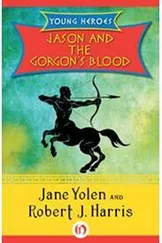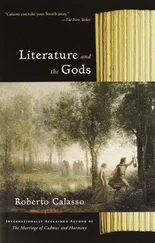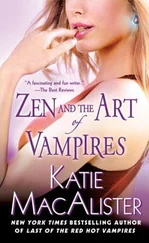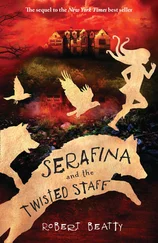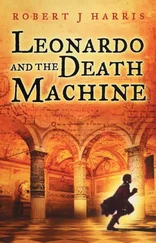Robert Pirsig - Zen and the Art of Motorcycle Maintenance
Здесь есть возможность читать онлайн «Robert Pirsig - Zen and the Art of Motorcycle Maintenance» весь текст электронной книги совершенно бесплатно (целиком полную версию без сокращений). В некоторых случаях можно слушать аудио, скачать через торрент в формате fb2 и присутствует краткое содержание. Жанр: Современная проза, на английском языке. Описание произведения, (предисловие) а так же отзывы посетителей доступны на портале библиотеки ЛибКат.
- Название:Zen and the Art of Motorcycle Maintenance
- Автор:
- Жанр:
- Год:неизвестен
- ISBN:нет данных
- Рейтинг книги:5 / 5. Голосов: 2
-
Избранное:Добавить в избранное
- Отзывы:
-
Ваша оценка:
- 100
- 1
- 2
- 3
- 4
- 5
Zen and the Art of Motorcycle Maintenance: краткое содержание, описание и аннотация
Предлагаем к чтению аннотацию, описание, краткое содержание или предисловие (зависит от того, что написал сам автор книги «Zen and the Art of Motorcycle Maintenance»). Если вы не нашли необходимую информацию о книге — напишите в комментариях, мы постараемся отыскать её.
Zen and the Art of Motorcycle Maintenance — читать онлайн бесплатно полную книгу (весь текст) целиком
Ниже представлен текст книги, разбитый по страницам. Система сохранения места последней прочитанной страницы, позволяет с удобством читать онлайн бесплатно книгу «Zen and the Art of Motorcycle Maintenance», без необходимости каждый раз заново искать на чём Вы остановились. Поставьте закладку, и сможете в любой момент перейти на страницу, на которой закончили чтение.
Интервал:
Закладка:
7
Heat is everywhere now. I can’t ignore it anymore. The air is like a furnace blast so hot that my eyes under the goggles feel cool compared to the rest of my face. My hands are cool but the gloves have big black spots from perspiration on the back surrounded by white streaks of dried salt.
On the road ahead a crow tugs on some carrion and flies up slowly as we approach. It looks like a lizard on the road, dry and stuck to the tar.
On the horizon appears an image of buildings, shimmering slightly. I look down at the map and it must be Bowman. I think about ice water and air conditioning.
On the street and sidewalks of Bowman we see almost no one, even though plenty of parked cars show they’re here. All inside. We swing the machines into an angled parking place with a tight turn that points them outward, for when we’re ready to go. A lone, elderly person wearing a broad-brimmed hat watches us put the cycles on their stands and remove helmets and goggles.
“Hot enough for you?” he asks. His expression is blank.
John shakes his head and says, “Gawd!”
The expression, shaded by the hat, becomes almost a smile.
“What is the temperature?” John asks.
“Hundred and two”, he says, “last I saw. Should go to hundred and four.”
He asks us how far we have come and we tell him and he nods with a kind of approval. “That’s a long way”, he says. Then he asks about the machines.
The beer and air conditioning are calling, but we don’t break away. We just stand there in the hundred-and-two sun talking to this person. He is a stockman, retired, says this is pretty much ranch country around here and he used to own a cycle years ago. It pleases me that he should want to talk about his Henderson in this hundred-and-two sun. We talk about it for a while, with growing impatience from John and Sylvia and Chris, and when we finally say good-bye he says he is glad to have met us and his expression is still blank but we sense that he really meant it. He walks away with a kind of slow dignity in the hundred-and-two sun.
In the restaurant I try to comment on this but no one is interested. John and Sylvia look really out of it. They just sit and soak up the air-conditioned air without a move. The waitress comes for the order and that snaps them out of it a little, but they are not ready and so she goes away again.
“I don’t think I want to leave here”, Sylvia says.
An image of the elderly man outside in the widebrimmed hat comes back to me. “Think what it was like around here before air conditioning”, I say.
“I am”, she says.
“With the roads this hot and that bad back tire of mine, we shouldn’t go more than sixty”, I say.
No comment from them.
Chris, in contrast to them, seems to be back to his normal self, alert and watching everything. When the food comes he wolfs it down and then, before we are half-finished, asks for more. He gets it and we wait for him to finish.
Miles later and the heat is just ferocious. Sunglasses and goggles are not enough for this glare. You need a welder’s mask.
The High Plains break up into washed-out and gullied hills. It is all bright whitish tan. Not a blade of grass anywhere. Just scattered weed stalks and rocks and sand. The black of the highway is a relief to look at so I stare down at it and study how the blur whizzes by underfoot. Beside it I see the left exhaust pipe has picked up a bluer color than it has ever had before. I spit on my glove tips, touch it and can see the sizzle. Not good.
It’s important now to just live with this and not fight it mentally — mind control.
I should talk now about Phædrus’ knife. It’ll help understand some of the things we talked about.
The application of this knife, the division of the world into parts and the building of this structure, is something everybody does. All the time we are aware of millions of things around us… these changing shapes, these burning hills, the sound of the engine, the feel of the throttle, each rock and weed and fence post and piece of debris beside the road… aware of these things but not really conscious of them unless there is something unusual or unless they reflect something we are predisposed to see. We could not possibly be conscious of these things and remember all of them because our mind would be so full of useless details we would be unable to think. From all this awareness we must select, and what we select and call consciousness is never the same as the awareness because the process of selection mutates it. We take a handful of sand from the endless landscape of awareness around us and call that handful of sand the world.
Once we have the handful of sand, the world of which we are conscious, a process of discrimination goes to work on it. This is the knife. We divide the sand into parts. This and that. Here and there. Black and white. Now and then. The discrimination is the division of the conscious universe into parts.
The handful of sand looks uniform at first, but the longer we look at it the more diverse we find it to be. Each grain of sand is different. No two are alike. Some are similar in one way, some are similar in another way, and we can form the sand into separate piles on the basis of this similarity and dissimilarity. Shades of color in different piles… sizes in different piles… grain shapes in different piles… subtypes of grain shapes in different piles… grades of opacity in different piles… and so on, and on, and on. You’d think the process of subdivision and classification would come to an end somewhere, but it doesn’t. It just goes on and on.
Classical understanding is concerned with the piles and the basis for sorting and interrelating them. Romantic understanding is directed toward the handful of sand before the sorting begins. Both are valid ways of looking at the world although irreconcilable with each other.
What has become an urgent necessity is a way of looking at the world that does violence to neither of these two kinds of understanding and unites them into one. Such an understanding will not reject sand-sorting or contemplation of unsorted sand for its own sake. Such an understanding will instead seek to direct attention to the endless landscape from which the sand is taken. That is what Phædrus, the poor surgeon, was trying to do.
To understand what he was trying to do it’s necessary to see that part of the landscape, inseparable from it, which must be understood, is a figure in the middle of it, sorting sand into piles. To see the landscape without seeing this figure is not to see the landscape at all. To reject that part of the Buddha that attends to the analysis of motorcycles is to miss the Buddha entirely.
There is a perennial classical question that asks which part of the motorcycle, which grain of sand in which pile, is the Buddha. Obviously to ask that question is to look in the wrong direction, for the Buddha is everywhere. But just as obviously to ask that question is to look in the right direction, for the Buddha is everywhere. About the Buddha that exists independently of any analytic thought much has been said… some would say too much, and would question any attempt to add to it. But about the Buddha that exists within analytic thought, and gives that analytic thought its direction, virtually nothing has been said, and there are historic reasons for this. But history keeps happening, and it seems no harm and maybe some positive good to add to our historical heritage with some talk in this area of discourse.
When analytic thought, the knife, is applied to experience, something is always killed in the process. That is fairly well understood, at least in the arts. Mark Twain’s experience comes to mind, in which, after he had mastered the analytic knowledge needed to pilot the Mississippi River, he discovered the river had lost its beauty. Something is always killed. But what is less noticed in the arts… something is always created too. And instead of just dwelling on what is killed it’s important also to see what’s created and to see the process as a kind of death-birth continuity that is neither good nor bad, but just is.
Читать дальшеИнтервал:
Закладка:
Похожие книги на «Zen and the Art of Motorcycle Maintenance»
Представляем Вашему вниманию похожие книги на «Zen and the Art of Motorcycle Maintenance» списком для выбора. Мы отобрали схожую по названию и смыслу литературу в надежде предоставить читателям больше вариантов отыскать новые, интересные, ещё непрочитанные произведения.
Обсуждение, отзывы о книге «Zen and the Art of Motorcycle Maintenance» и просто собственные мнения читателей. Оставьте ваши комментарии, напишите, что Вы думаете о произведении, его смысле или главных героях. Укажите что конкретно понравилось, а что нет, и почему Вы так считаете.



